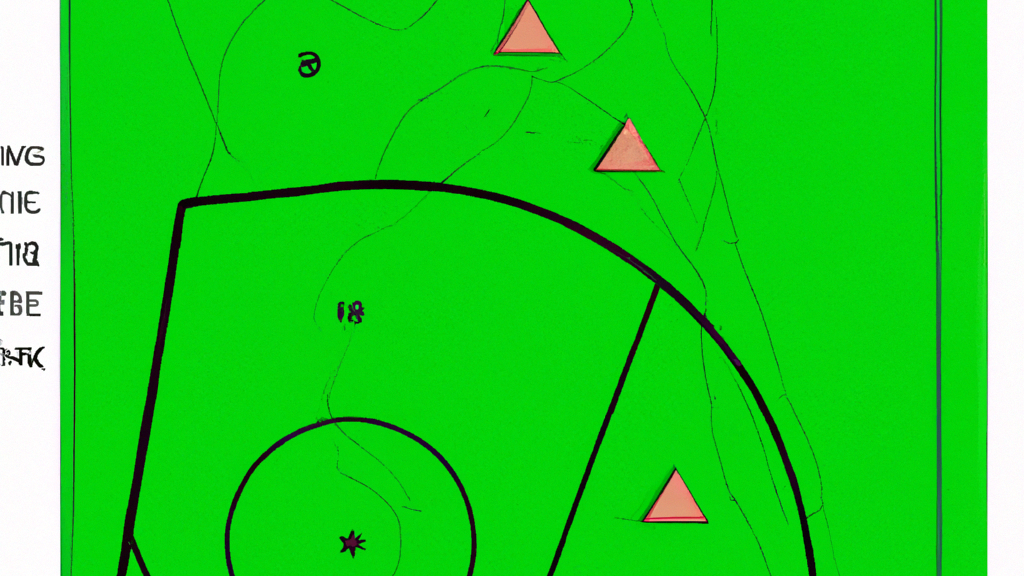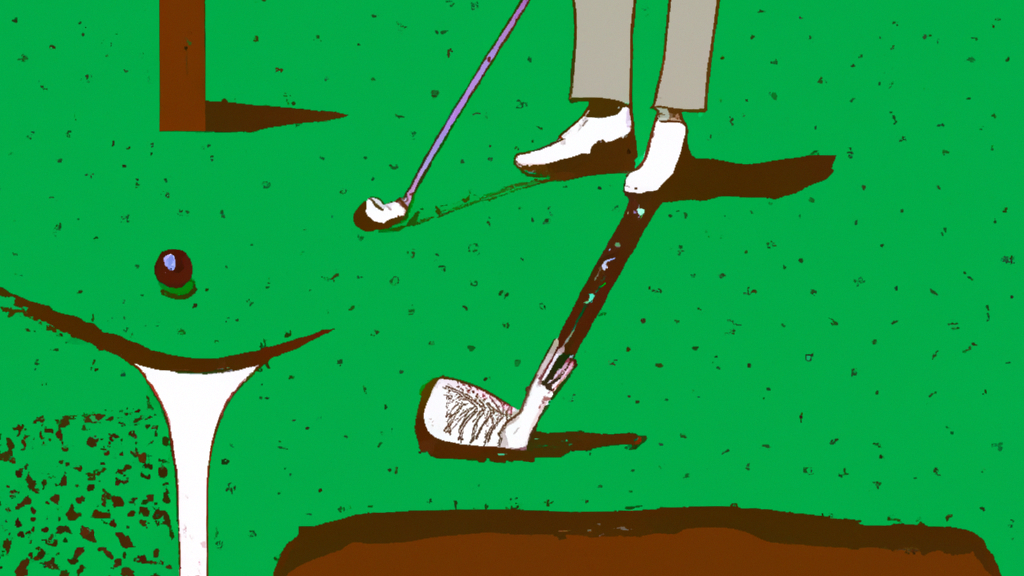THE BENEFITS OF USING DRONES IN GOLF COURSE MANAGEMENT
Golf course management is a complex and time-consuming task that requires a lot of effort and resources. However, with the advent of drone technology, golf course management has become more efficient and cost-effective. Drones are now being used in golf course management to provide aerial views of the course, monitor turf health, and detect irrigation issues. The benefits of using drones in golf course management are numerous, including improved course maintenance, reduced labor costs, and increased accuracy in identifying problem areas.
In this blog post, we will explore the benefits of using drones in golf course management and how they can help golf course managers and professionals improve their operations. So, whether you are a golf enthusiast, a country club member, or a professional golfer, read on to learn more about the benefits of using drones in golf course management.

Golf Course Management Made Easy with Drones
Golf courses are a beautiful and serene place to spend a day, but maintaining them can be a daunting task. Golf course management is a complex process that requires a lot of time, effort, and resources. However, with the advent of drone technology, golf course management has become much easier and efficient. Drones are unmanned aerial vehicles that can be used for a variety of purposes, including golf course management. In this article, we will discuss the benefits of using drones in golf course management.
1. Aerial Mapping
One of the most significant benefits of using drones in golf course management is aerial mapping. Drones can capture high-resolution images of the golf course, which can be used to create detailed maps. These maps can be used to identify areas that require maintenance, such as damaged greens, bunkers, and fairways. Aerial mapping can also be used to identify areas that are prone to flooding or erosion, allowing golf course managers to take preventive measures.
2. Irrigation Management
Irrigation is a critical aspect of golf course management. Proper irrigation ensures that the golf course remains green and healthy. However, traditional irrigation methods can be time-consuming and inefficient. Drones can be used to monitor the irrigation system and identify areas that require more or less water. This allows golf course managers to adjust the irrigation system accordingly, saving time and resources.
3. Pest Control
Pests can be a significant problem for golf courses. Traditional pest control methods can be harmful to the environment and time-consuming. Drones can be used to identify areas that are infested with pests, allowing golf course managers to take preventive measures. Drones can also be used to spray pesticides, reducing the need for traditional pest control methods.
4. Course Design
Drones can be used to create 3D models of the golf course, allowing golf course managers to visualize the course design. This can be used to identify areas that require redesigning, such as bunkers or water hazards. Drones can also be used to create virtual tours of the golf course, allowing golfers to preview the course before playing.
5. Course Maintenance
Maintaining a golf course can be a time-consuming and labor-intensive task. Drones can be used to inspect the golf course and identify areas that require maintenance, such as damaged greens or bunkers. This allows golf course managers to prioritize maintenance tasks, saving time and resources.
6. Environmental Monitoring
Golf courses are often located in environmentally sensitive areas. Drones can be used to monitor the environment and identify areas that require attention. For example, drones can be used to monitor water quality, identify areas that are prone to erosion, and monitor wildlife populations.
7. Marketing
Drones can be used to create stunning aerial footage of the golf course, which can be used for marketing purposes. This footage can be used to create promotional videos, virtual tours, and social media content. This can help attract new golfers to the course and increase revenue.
8. Safety
Safety is a critical aspect of golf course management. Drones can be used to identify potential safety hazards, such as fallen trees or damaged structures. This allows golf course managers to take preventive measures, ensuring the safety of golfers and staff.
In conclusion, drones have revolutionized golf course management. They offer a range of benefits, including aerial mapping, irrigation management, pest control, course design, course maintenance, environmental monitoring, marketing, and safety. By using drones, golf course managers can save time, resources, and effort, while ensuring that the golf course remains green, healthy, and safe. As drone technology continues to evolve, we can expect to see even more benefits in the future.

- Using Drones for Golf Course Management – Pilot Institute
Dec 13, 2021 … The simplest way to use drones in golf courses is to use aerial images and videos as marketing materials. Drones are exceptionally suitable for … - Drones For Golf Course Marketing And Maintenance Are A Big Hit …
Mar 15, 2020 … Using a drone with multispectral sensors will also assist greatly in golf course construction and maintenance through providing vital data on … - The Rising Trend of Drones in Golf Agronomy | DroneDeploy
Feb 5, 2020 … There are multiple facets of golf agronomy – maintenance plans, … By flying their drones every morning before the club opened, … - Drone Photography and Videography for Marketing
Industries That Use Aerial Marketing · Real Estate and Property Management · Tourism and Hospitality · Golf Courses · Property Mapping & Inspections. - Golf Course Management — The Drone Co. – RVA | Aerial Drone …
Using drone technology to manage your golf course can save thousands of dollars in chemical applications by targeting troublesome areas. Not only does this save … - GPS technology in golf course management – GCMOnline.com
Drones navigate with GPS to collect imagery from above the golf course. … Agriculture was among the first areas to benefit from GPS: Farmers could narrow … - AGCSATech Drone Services
Turf Managers are utilising the benefits of Multispectral sensors on Golf Courses, Sportsfield & Grounds, … Benefits of Using Multispectral Drones. - Husqvarna and GreenSight partner to launch first major golf and …
… benefits of daily drone imaging at golf and sports turf facilities with TurfCloud, GreenSight’s industry-leading cloud-based turf management platform. - Drones and Golf Courses
Jan 18, 2022 … Read the below article he wrote regarding Drones and Golf Courses. … with research, education, and increased usage, the benefits will be … - TerraView Solutions: Drone Turf Health Analysis for Golf Courses
Fore-ward thinking turf health management. An advanced drone-based analytics platform for golf courses. Learn More … PRODUCT BENEFITS. FOR GOLF COURSES.
The lesser-known side of The Benefits of Using Drones in Golf Course Management
- The first recorded game of golf was played in Scotland in the 15th century.
- Golf balls were originally made out of wood until the mid-1800s when they began to be made out of rubber.
- The Masters Tournament, one of golf’s four major championships, has been held annually at Augusta National Golf Club since 1934.
- Professional golfer Tiger Woods has won a total of 82 PGA Tour events, tying him with Sam Snead for the most wins in history.
- Caddies have been a part of golf since its inception and were originally responsible for carrying clubs and providing advice to players during their rounds.
- In addition to physical fitness, mental toughness is also crucial for success in professional golf as players must navigate challenging courses while maintaining focus under pressure.
- Many country clubs offer amenities beyond just golf such as tennis courts, swimming pools, and fine dining options for members and guests alike.
- Golf course architecture is an important aspect that can greatly impact a player’s experience on the course; famous architects include Donald Ross and Pete Dye among others





